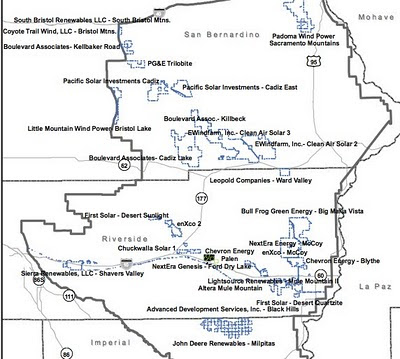San Bernardino County Opposes Desert Conservation?

The San Bernardino County Land Use Services Department recently filed their response to the Draft Environmental Impact Statement for the proposed Calico Solar Project, located east of Newberry Springs. If I am reading it correctly, the County explicitly opposes long-term conservation of Mojave Desert habitat as a means to off-set the negative impacts of industrial scale development. The County comments stirred some though on just what a deal energy companies are getting by developing on public land, and how the County's argument cheapens the value of open space for future generations. As many of you already know, the California Energy Commission (CEC) and Bureau of Land Management (BLM) may require a developer to fund or purchase private land that contains suitable desert habitat and set it aside for conservation. This is required because the developers are applying to bulldoze thousands of acres of natural resources on public land essentially because they are too lazy or g



